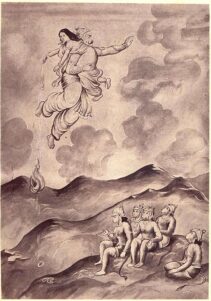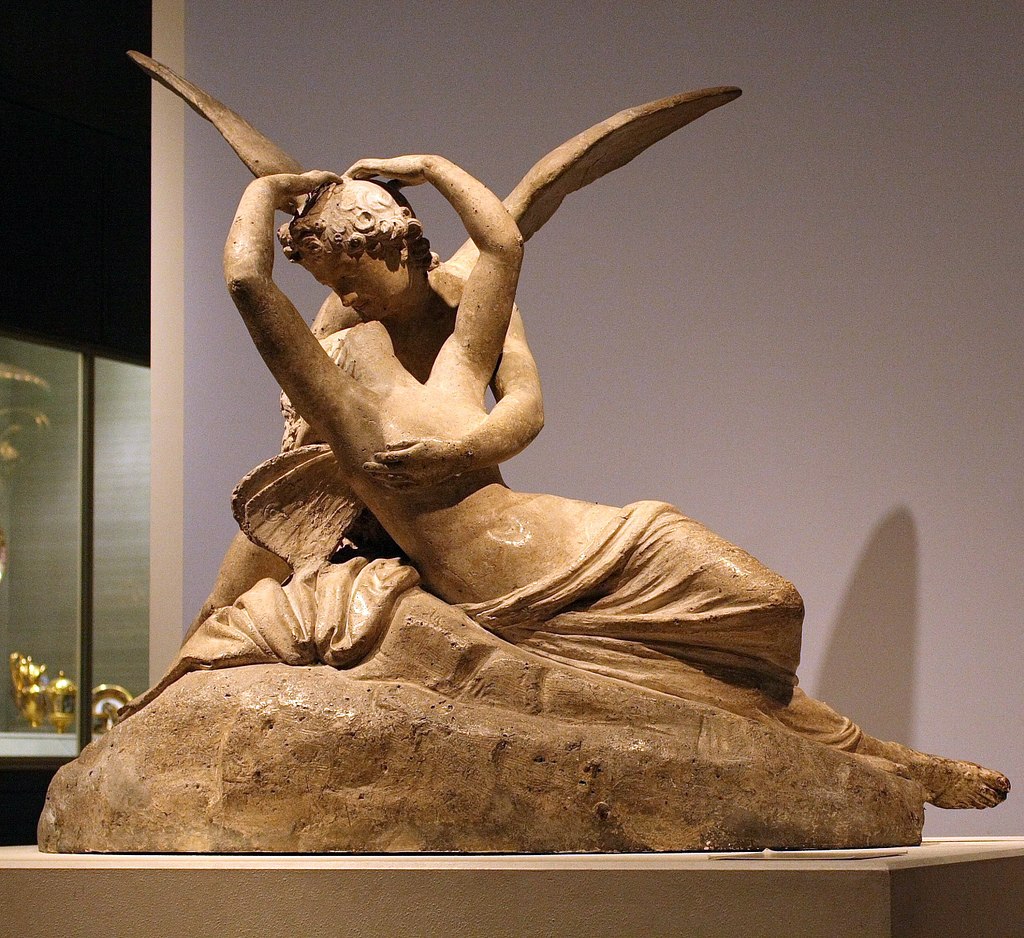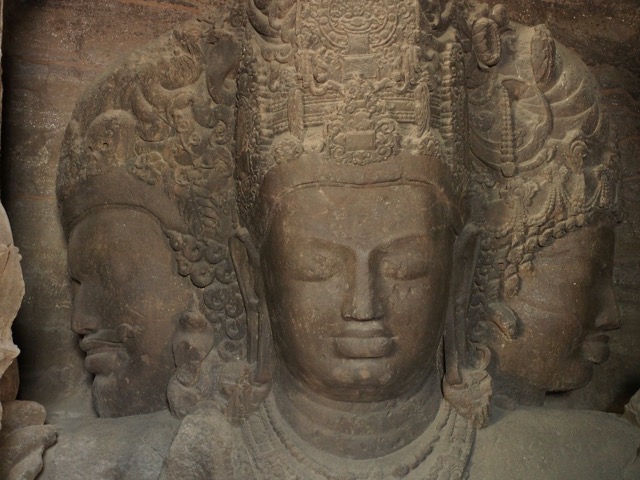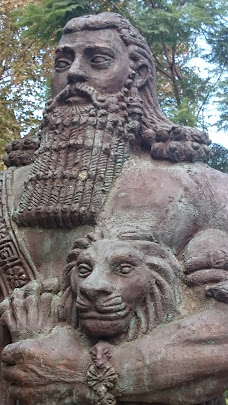Tales from the Ramayana – The Abduction of Sita
Article By Miha Kosir
posted by UK, September 8, 2023
 In the world of literature there are a few well known epic stories in which the plot is built around the abduction of a woman. In the East one of them is the ancient Indian story of the Ramayana, and in the West, there is the ancient Greek story of the Iliad.
In the world of literature there are a few well known epic stories in which the plot is built around the abduction of a woman. In the East one of them is the ancient Indian story of the Ramayana, and in the West, there is the ancient Greek story of the Iliad.
These are not just stories of men and women, but also of gods and goddesses. According to tradition there were times when gods would descend to Earth and bring justice in times of spiritual crisis and moral disorder. In ancient India, the god Vishnu descended to Earth many times in human form as an “avatar”. When he came in the form of Rama, his counterpart, the goddess Lakshmi, had to descend as well. She emerged from a Lotus flower as Sita and was raised by King Janak.
The culmination of the Ramayana story is the battle between Rama and Ravana as a consequence of Ravana’s abduction of Rama’s wife, Sita. Ravana was a powerful demon, king of Lanka, son of a rishi, who gained his powers by performing austere spiritual meditation practices for many thousands of years, and as a result earned a boon or blessing from Brahma and Shiva which literally made him invincible. Though Ravana was a demon, he was a great devotee of Shiva and is still revered and worshipped in some parts of India to this day. In the scripture of Bhagavata Purana we learn of two gatekeepers of the highest realm of all the worlds, which is called Vaikuntha, a place of eternal bliss, who refused entry to the Kumara sages. The Kumaras cursed them and the Lord of Vaikuntha, Vishnu, gave them two options, either to be incarnated on Earth seven times as mere mortals and devotees of Vishnu, or three times as powerful demons. To be able to return to Vaikuntha and to the Lord Vishnu in the shortest possible time, they chose to be incarnated only three times as demons. This is one of the stories where Ravana can be traced back to a doorkeeper of the heavens.
As with all the great stories, there is always a part of the story which touches everyone, that is, a journey of the soul. To begin the journey a certain transformation must happen; this is one thing that truly matters.
This transformation is already very clearly signalled in the background of the making of the Ramayana. The Ramayana was written by Valmiki, who according to some sources was born and first known under the name Ratnakar. He was a hunter, who later become a highway robber. One day, when Ratnakar was around 30 years old, he attacked a man in the forest and demanded valuables from him. That man was none other than the wandering sage Narada, who talked to Ratnakar about his wrongdoings and gave him a mantra. Ratnakar took the mantra and went into a deep meditation; it was so long and deep that all over him an anthill was formed, which is also the meaning of the name Valmiki. When Valmiki was around 70 years old Brahma appeared to him and instructed him to write the Ramayana. The book consists of seven chapters. Sita is kidnapped in the third chapter and is found by Hanuman in Lanka in the fifth, which is called Sundara Skanda. There we learn of Hanuman’s adventures and of his qualities. This chapter has also been described as the heart of the Ramayana and is traditionally a recommended starting point for approaching the epic.
Hanuman is known for his enormous strength and unwavering devotion to Rama. According to the legend, his birth is also associated with the wind god Vayu. As a child he received many gifts from various gods and held these powers within, forgotten, until he was reminded of his powers just before a search and rescue mission in Lanka. These yogic powers or siddhis included an ability to reduce or increase the size of his body at will, so he could grow enormously big or shrink invisibly small.
Sundara Skanda describes Hanuman’s flight from India to Lanka and his encounter with Sita. On the way, Hanuman encountered three obstacles. First was a flying mountain, Mainak, second was the snake Surasa, and the third was the demoness Simhika. The flying mountain Mainak recognised Hanuman and, due to their mutual affinity with the wind god Vayu, he offered Hanuman to lie down on him and to take a rest during his flight. Hanuman said that this was not possible as his goal was to find Sita, so instead he gave the mountain a big hug and continued his journey. After that, he met the snake Surasa, who told Hanuman to enter her mouth as she had received a boon from Brahma that nobody was able to escape from her mouth. Hanuman promised to come back and enter her mouth after he had rescued Sita, but the snake said that he had to enter her mouth first if he wished to continue on his way. He agreed and immediately started to grow bigger and bigger. While he was growing bigger the mouth of the snake also grew larger to be able to hold Hanuman, but then suddenly Hanuman became very small and just walked in and out of the snake’s mouth. By doing that he could escape Surasa’s mouth. The snake then revealed that she was none other than a goddess, the mother of the Nagas, who had come to test him. The third obstacle he encountered was the demon Simika. Simika had a boon that nobody with a shadow could escape her. When Hanuman was flying, he felt a sudden pull in his flight, he looked down and saw Simika holding onto his shadow. In that moment he thought of Rama, uttered his name and the demoness instantly fell down dead.
By overcoming these three obstacles, he reached the island of Lanka. He eventually found Sita at the palace of Ravana. He explained the situation to her and offered to take her back to Rama on his back, but Sita refused, saying that she would only accept the rescue from Rama. She gave him a lock of her hair as proof that she was still alive and sent him off. Hanuman went back to Rama and the story continues, leading to a great battle where justice is done.
From the fifth chapter there are already a few lessons to highlight, which can apply to a spiritual seeker. In the life of a spiritual seeker, obstacles are seen as tests. The first obstacle, the flying mountain Mainak, wanted to stop Hanuman by offering him a place to rest and take comfort, but Hanuman didn’t forget his goal. The first tests would come from those closest to us. Our family and friends would be the first ones trying to change our minds; out of their love they would like to stop us on our way that seems different to the usual. To pass the first test one has to show love and be clear about the goal.
The second test would come from demi-gods, from our karmic influences. To be able to reach the goal and overcome karma one has to use intelligence, one has to find out what powers one holds within. Knowledge is only a guide from the outside towards the inside, so that the wisdom can be awakened from within.
When one can overcome one’s social and cultural environment and karmic bonds, the last test will come from a god in order to test our sincerity and determination. Only complete focus on the divine can overcome this final test. By overcoming this final test, Hanuman also showed what was his strongest weapon, his fixed focus of his mind onto Rama.
There are many teachings and symbols in the story, which is why reading stories like the Ramayana help us to awaken the soul, to remember what the soul is yearning for. It is like Sita’s yearning for Rama, that natural bond of connection that can never be completely broken; but our mind, like Ravana, can cause a temporal separation.
Image Credits: By Gita Press Gorakhpur | Wikimedia Commons | CC0 1.0
Related posts:
Image References
By Gita Press Gorakhpur | Wikimedia Commons | CC0 1.0
Permissions required for the publishing of this article have been obtained



What do you think?